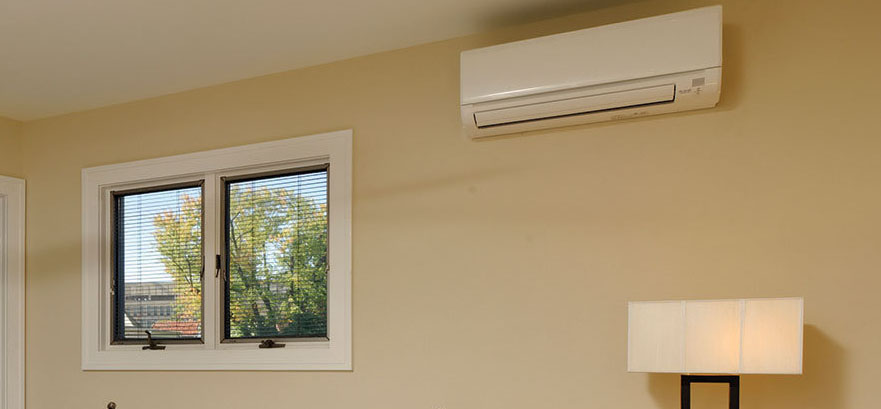When selecting an air-source heat pump, consider the following three characteristics carefully: the energy efficiency rating, sizing, and the system’s components.
Energy Efficiency Ratings

In the United States, we rate a heat pump’s energy efficiency by how many British thermal units (Btu) of heat it moves for each watt-hour of electrical energy it consumes. Every residential heat pump sold in this country has an EnergyGuide Label, which features the heat pump’s heating and cooling efficiency performance rating, comparing it to other available makes and models.
The Heating Seasonal Performance Factor (HSPF) rates both the efficiency of the compressor and the electric-resistance elements. The HSPF gives the number of Btu harvested per watt-hour used. The most efficient heat pumps have an HSPF of between 8 and 10.
The Seasonal Energy Efficiency Ratio (SEER) rates a heat pump’s cooling efficiency. In general, the higher the SEER, the higher the cost. However, the energy savings can return the higher initial investment several times during the heat pump’s life. Replacing a 1970s vintage, central heat pump (SEER = 6) with a new unit (SEER=12) will use half the energy to provide the same amount of cooling, cutting air-conditioning costs in half. The most efficient heat pumps have SEERs of between 14 and 18.
You’ll find the Energy Star™ label – sponsored by the U.S Department of Energy (DOE) and the U.S. Environmental Protection Agency (EPA) – on heat pumps with an HSPF of at least 7 and a SEER of at least 12. Many new heat pumps exceed these ratings, but looking for this label is a good way to start shopping for one.
Sizing for Heat Pumps
When selecting a new heat pump, it’s important that you determine the proper size needed for your home. Bigger is not better. Oversizing causes the heat pump to start and stop more frequently, which is less efficient and harder on the components than letting it run for longer cycles. A properly sized heat pump also will provide you with better comfort and humidity control than an oversized one.
The heating and cooling capacity of heat pumps is measured in Btu per hour. The cooling capacity is commonly expressed in “tons” of cooling capacity – each ton equaling 12,000 Btu per hour. Correct sizing procedures involve complex calculations, which are best performed by an experienced contractor, who uses sizing methods accepted by the heat pump industry. Don’t employ a contractor who guesses the size of the heat pump needed. Rule-of-thumb sizing techniques are generally inaccurate, often resulting in higher than necessary purchase and annual energy costs.
Heat Pump System Components
You and your contractor should discuss options that will help improve your home’s comfort and the economy of your heat pump. Regarding ducts, for example, it’s important to carefully consider their design and materials, as well as the proper amount of space they require. Check your home’s blueprints to see if the architect and builder have planned adequate space for ducts and fans. Heating and cooling contractors complain that they often have to squeeze heating and cooling systems into spaces that are too small, resulting in constricted ducts and inadequate airflow.
Except for packaged systems, you’ll also need to select the proper type of indoor coil for adequate summer moisture removal.

